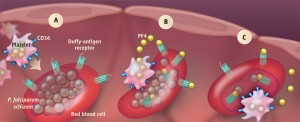The New York Times has an interesting piece on mistletoe’s role in nature. It’s a parasite but it appears to be key in maintaining a health and balanced forest ecosystem:
Dr. Watson, known in academic circles as “the mistletoe guy,” had long suspected that his favorite plant was a keystone species, meaning it punches above its weight, ecologically speaking, but even he was unprepared for the results. He had supposed that creatures that fed or nested on mistletoe would be affected by its removal. Instead, he found that the whole woodland community in the mistletoe-free forests declined.
Three years after the mistletoe vanished, so had more than a third of the bird species, including those that fed on insects. Bird diversity is considered an indicator of overall diversity. Where mistletoe remained, bird species increased slightly. It was a similar story for some mammals and reptiles, but, in another surprise, particularly for those that fed on insects on the forest floor.
“It’s a bit of a head-scratcher,” said Dr. Watson.
Analysis showed that species of mistletoe play an important role in moving nutrients around the forest food web. That has to do with their status as parasites.
Nonparasitic plants suck nutrients out of their own leaves before they let them fall, sending dry containers to the ground. But because the vampiric mistletoe draws water and nutrients from the tree stem or branch it attaches to, it is more nonchalant about leaving that nutrition in falling leaves. That means the fallen leaves still contain nutrients that feed creatures on the forest floor.
Not only that, but mistletoes make and drop leaves three or four times as rapidly as the trees they live off of, said Dr. Watson. As evergreens, they also do it throughout the year, even when trees are dormant. It is like a round-the-calendar mistletoe banquet.

